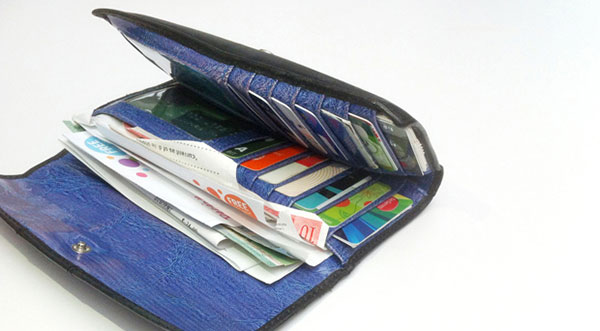Are you still lugging around a heavy, cash- and credit card-laden wallet and are tired of it? If so, you’re in luck because there are so many mobile payment apps at your disposal that you will never have to worry about carrying a bunch of “paper or plastic” ever again. All you need is a smartphone and to take a few safety precautions.
You won’t be alone when you switch to smartphone payments, either—last year, it was projected that the number of people who made mobile payments in the U.S. would increase to 64 million, which is nearly 30 percent of all smartphone users in the country.
Are you ready to turn your smartphone into a much lighter wallet? Here’s a look at how to do it and some of the options that are available to you.
Current Mobile-Pay Apps & Wallets
Digital wallets and mobile wallets are two often-used terms in the mobile payment environment. Although they’re used interchangeably at times, there’s a slight distinction between the two. Digital wallets are software-based payment systems that are designed to keep your banking information and passwords safe. They are your virtual “vault” and can be accessed from any device (computer, tablet, smartphone, etc.). You can make online purchases and send people money through a digital wallet.
Mobile wallets meanwhile are simply apps as opposed to a software system. They’re only accessible through your smartphone or a wearable device like a smart watch. The mobile wallet is a great alternative to carrying a physical one—it not only stores your credit and debit cards, but also boarding passes, gift cards, store loyalty/reward cards and event tickets.
Some companies like Google and Samsung are starting to combine their mobile pay services so they’re accessible both though the cloud or their mobile apps, so the line between digital and mobile wallets is sometimes blurred.
Current mobile pay platforms include:
Apple Pay
Naturally, this app works on Apple devices. Users can make in-store, online and in-app purchases as well as send and receive money from people. You can make payments by connecting Apple Pay to your credit or debit card.
Google Pay
Google Pay is available on all Android devices via Google Play. You can make purchase in stores with your smartphone, online or in app. You can also send or request money via Google Pay. The app can be connected to major credit cards (American Express, Visa, Discover and MasterCard) as well as your bank account.
Samsung Pay
Samsung Pay is exclusive to Samsung devices, but works like Google Pay and Apple Pay. Users can put all of their credit, debit, gift and loyalty on their mobile device and make in-store, online or in-app purchases.
PayPal One Touch
PayPal users can continue to use their account as they normally would with the One Touch feature. One Touch helps users save time because they can stay logged in on any browser, device or operating system without having to use their PayPal username and password every time they want to purchase something. PayPal’s Buyer Protection also covers eligible One Touch purchases.
Venmo
Venmo allows you to send and receive money from people. You can use money in your Venmo account or with a connected debit card or bank account to pay others or buy items. You can also make online (through PayPal) and in-app purchases with Venmo. For in-store purchases, Venmo offers its MasterCard.
How Mobile Wallets Work
Once you have selected your mobile pay app, add the credit, debit and loyalty card information that you want to include in it. Now when you’re shopping in person, you can use your phone to pay for items at any store that accepts mobile wallets. You may want to carry a least one physical card in case you come across a store that doesn’t accept mobile payments. That is becoming less likely however, as Apple, Samsung and Google all say now that millions of places accept their apps.
How Safe Are Mobile Wallets?
In terms of security, a mobile wallet is safer than your physical one. If you lost your traditional wallet or it was stolen, whoever had it would have immediate access to your cards and any cash you had in it. If your phone was lost or stolen, your mobile wallet would require some kind of log in to access your financial information, whether it’s a password, face scan or fingerprint ID.
Your credit card and bank information will remain safe when you’re making payments, too. When you use your mobile wallet, your data is “tokenized” so your account details are not exposed while they’re transmitted over NFC (near-field communication) waves. If that token was somehow stolen, the bank or credit card could replace it. Your card number(s) would remain safe.
In the event your phone’s stolen, companies like Samsung, Apple and Google allow you to wipe your device’s data remotely.
Should You Get A Mobile Wallet?
If you’re ready to unload some weight from your wallet, now is the time to embrace mobile payments. They make buying things more convenient (no more fumbling through your wallet looking for your credit, debit or loyalty cards), and mobile wallets add more layers of defense between your financial information and criminals.
Imagine—all of your cards, plane, train and event tickets and more all in one convenient location—your smartphone that you carry with you anyway. Doesn’t your wallet feel lighter just thinking about it?
While you’re moving cards to your phone, download the award-winning GEICO Mobile app. You can view and save your policy ID cards right onto your smartphone—that’s one less card you will have to keep track of! You can also make policy payments, request roadside service and more right from the app.
By Joe Dyton
